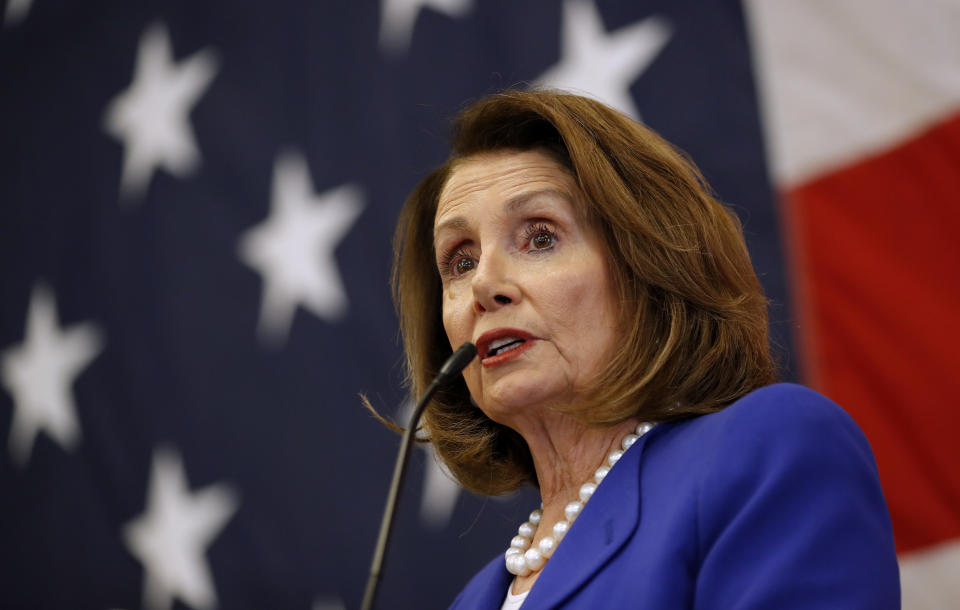Democrats have a weak answer to the Trump tax cuts
The tax cuts President Trump signed into law last December are generally unpopular. But what if there was a chance they’d get repealed? Odds are, they’d suddenly become more popular.
This is the conundrum Democrats face this year as they plot to retake control of the House of Representatives, and possibly the Senate. They have two natural advantages. First, the president’s party typically loses seats in midterm elections. And second, President Trump is the most controversial president in decades, besieged by scandals ranging from porn-star hush money to self-dealing Cabinet members such as the EPA’s Scott Pruitt.
But Democrats might easily bungle these advantages, and their approach to the Trump tax cuts helps explain why. Democrats have maligned the tax cuts as a giveaway to the rich, and suggested they’d vote to repeal some of them if they take control of Congress. Only one problem: That sounds like they’re in favor of raising taxes, which come to think of it, isn’t a great campaign pitch. “There have been mixed messages coming from Democratic officials, on the question of whether they’re looking to increase federal revenue or not,” says Scott Greenberg of the nonprofit Tax Foundation.
In a recent interview with Politico, for instance, Democratic lightning rod Nancy Pelosi, the House Minority Leader, said reports that she wants to roll back the Trump tax cuts are “accurate.” Conservative social-media accounts erupted with outrage, claiming the whole Democratic plan is to gain control of Congress and hike everybody’s taxes. So the next day, Pelosi clarified, saying all she really wants to do is “rebalance the tax code to put the middle class first.”
A Democratic plan by summer
What’s the actual Democratic plan? So far, there isn’t one. But Pelosi says there will be by summer, with special emphasis on “the financial instability of America’s families.” Meanwhile, there’s plenty of chatter among Democrats about rescinding the Trump tax cuts for top earners and pushing the corporate tax rate up by a few percentage points, to perhaps 25%. The Trump law cut it from 35% to 21%.
That might sound logical. In a recent NBC/Wall Street Journal poll, just 27% of respondents said they approve of the tax law, while 36% disapproved. A Politico/Morning Consult poll found that just one-fourth of voters have noticed their paycheck actually growing on account of the law. Most are wealthy. So if a majority of voters dislike something, why not get rid of it?

Here’s why: Because disapproving of a law isn’t the same as favoring its repeal. Just ask foes of the Affordable Care Act, the 2010 law that Republicans tried and failed to repeal last year. For years, the ACA had a net unfavorable rating, with more people opposing it than supporting it. Republicans thought weak public support would allow them to kill the ACA. They turned out to be wrong. Supporters of the law easily demagogued the repealers as heartless bureaucrats intent on harming patients, and support for the ACA crested 50% for the first time while it was under attack. Efforts to kill the law actually made it more popular.
Apply that to tax cuts. The typical family might only be saving 80 bucks a month or so—but try taking it away. Americans are also leery when politicians say they only want to raise taxes on the wealthy, because, well, nobody believes politicians. There’s also that minority of voters who say they approve of the tax cuts, who Democrats would be foolish to write off in an election where they need every possible vote. Dems should also pay attention to at least one important voting bloc that appreciates the tax cuts—Main Street business owners who have long felt Washington talks down to them and offers no real help. They don’t all like Trump, but many feel he’s a politicians who’s actually doing something for once, besides flapping his jaws.
The Democrats face another basic problem, given that unemployment is low and the economy is doing well: Coming up with legitimate problems to run on. But there are a few. Healthcare costs, including prescription drugs, remain exorbitant for many families. Pay is stagnant for many middle-class workers. And there are 10 to 12 million working-age Americans who ought to have a job or be looking for one, but aren’t, for a variety of reasons economists have trouble pinning. A coherent plan addressing these concerns would get people’s attention.
When Democrats do introduce an economic platform this summer, it’s likely to contain elements of last year’s forgettable “Better Deal” plan, such as a higher minimum wage, more infrastructure spending, job retraining for displaced workers, limits on drug prices and new protections against corporate monopolies. Some of that will require new spending, and axing the Trump tax cuts is one way to come up with the money. They’d just have to raise somebody’s taxes to do it.
Confidential tip line: [email protected].Click here to get Rick’s stories by email.
Rick Newman is the author of four books, including Rebounders: How Winners Pivot from Setback to Success. Follow him on Twitter: @rickjnewman
Follow Yahoo Finance on Facebook, Twitter, Instagram, and LinkedIn
